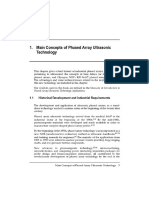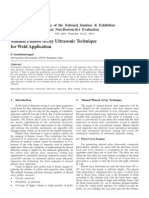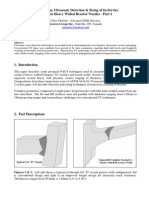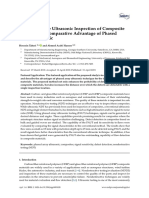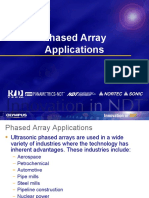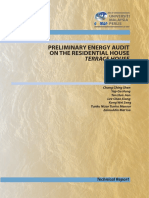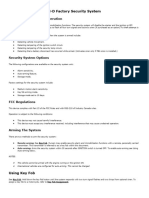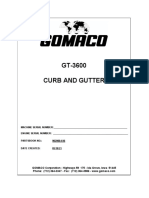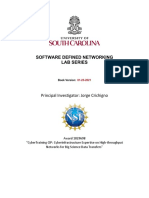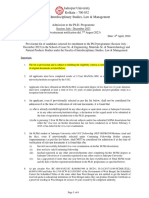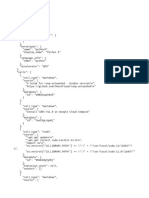0% found this document useful (0 votes)
18 views16 pagesMET413 Module 4 Note
Phased Array Ultrasonic Testing (PAUT) is an advanced non-destructive testing technique that utilizes multiple controlled ultrasonic elements for detailed inspections of materials, allowing for flexible beam focusing and steering. The document outlines the principles, working mechanisms, types of probes, scanning techniques, and the significance of wedges in PAUT, as well as introducing Time of Flight Diffraction (TOFD) for accurate crack detection and sizing. TOFD employs a time-based approach to evaluate defects, enhancing inspection speed and reliability across various applications.
Uploaded by
arunlalmpCopyright
© © All Rights Reserved
We take content rights seriously. If you suspect this is your content, claim it here.
Available Formats
Download as PDF, TXT or read online on Scribd
0% found this document useful (0 votes)
18 views16 pagesMET413 Module 4 Note
Phased Array Ultrasonic Testing (PAUT) is an advanced non-destructive testing technique that utilizes multiple controlled ultrasonic elements for detailed inspections of materials, allowing for flexible beam focusing and steering. The document outlines the principles, working mechanisms, types of probes, scanning techniques, and the significance of wedges in PAUT, as well as introducing Time of Flight Diffraction (TOFD) for accurate crack detection and sizing. TOFD employs a time-based approach to evaluate defects, enhancing inspection speed and reliability across various applications.
Uploaded by
arunlalmpCopyright
© © All Rights Reserved
We take content rights seriously. If you suspect this is your content, claim it here.
Available Formats
Download as PDF, TXT or read online on Scribd
/ 16




















